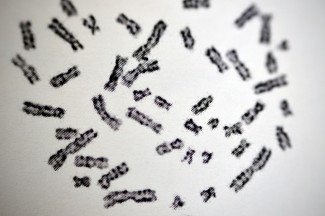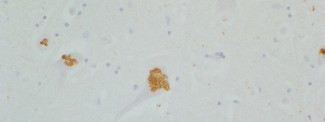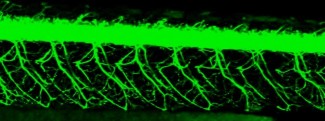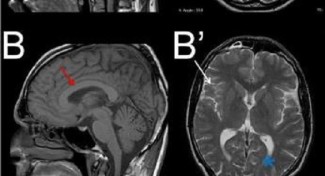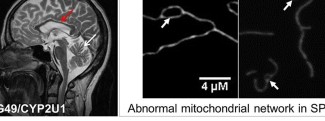With regard to the causes of spastic paraplegia, in 70% of cases the mode of transmission of the disease is autosomal dominant. 20% of families have an autosomal recessive pattern of transmission, and it is estimated that 2% of cases of spastic paraplegia are linked to the X chromosome. In 8% of cases, there is no family history, and such cases are referred to as sporadic cases.
Causes of Spastic Paraplegia
Today, more than 73 chromosomal regions are known to carry mutations responsible for spastic paraplegia. However, it is estimated that in nearly 50% of families, the genetic mutation is unknown, which justifies active genetic research into these conditions.
It is also essential to understand the biological effects of known mutations in order to open up new avenues for treatment.
At Paris Brain Institute
Researchers from the Basic to Translational Neurogenetics team led by Alexandra Durr and Giovanni Stevanin are working to identify new genes or molecular dysfunctions that cause or influence spastic paraplegia through genomic analysis of familial forms.
The study on identification of a key mechanism in hereditary spastic paraplegia type 11 conducted by Frédéric Darios and Giovanni Stevanin has highlighted the role of the accumulation of certain lipids in hereditary spastic paraplegia type 11. These results suggest that targeting this mechanism could be an interesting therapeutic approach in managing this disease.
The collaborative study on hereditary spastic paraplegia type 58, a demyelinating disease conducted by Khalid Hamid El Hachimi from Paris Brain Institute and Amandine Duchesne from INRA has found that mutations in the KIF1C gene, responsible for hereditary spastic paraplegia type 58 (SPG58/SPAX2), cause myelin loss. This discovery could lead to progress in understanding the mechanisms of hereditary spastic paraplegia type 58.
The study on hereditary spastic paraplegia: identifying the impact of each mutation, by the research team led by Giovanni Stevanin (INSERM/EPHE), highlights the effect of certain mutations in patients with this condition. This study emphasizes the need to develop tools for interpreting the biological effects of mutations in human genetics.
The study Loss of spatacsin function is accompanied by motoneuron degeneration makes the link between the degeneration of neurons, lysosomal dysfunction, and lipid metabolism. Many proteins that are encoded by genes affected in hereditary spastic paraplegia are also involved in these mechanisms in a recurring manner, so understanding them could create new opportunities for future treatment.

